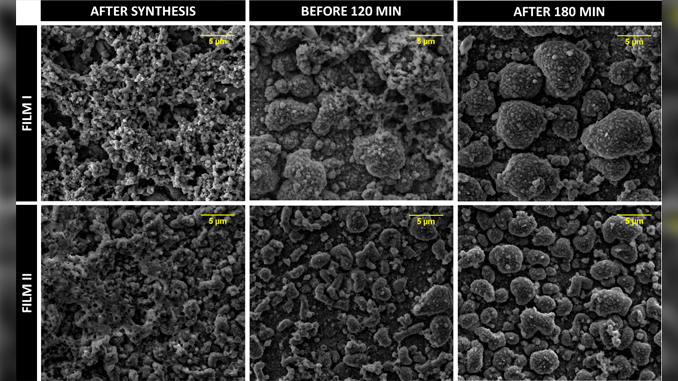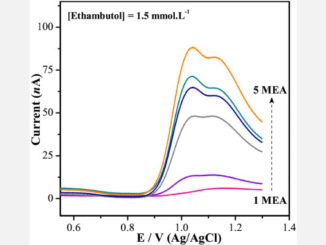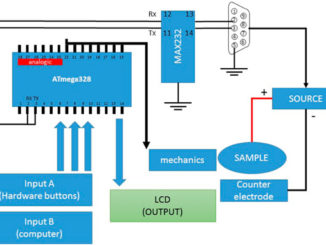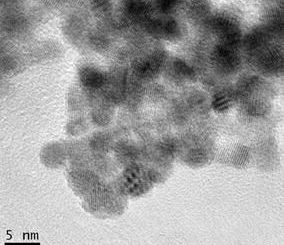
Writers: R. Gonçalves and A.A. Correa and R. Pereira and E.C. Pereira
Keywords: poly(3-hexylthiophene); impedance spectroscopy; electrochemical aging; electrochemical degradation
Abstract: In this paper, the electrochemical ageing of poly(3-hexilthiophene) was studied using two different films electrodeposited under different experimental conditions. The first one has been was prepared in acetonitrile with 0.1 mol L−1 of monomer + 0.1 mol L−1 of LiClO4(Film I). The second one has been synthesized in the same solvent with 0.2 mol L−1 of monomer + 0.2 mol L−1 of LiClO4, plus the addition of 10 mmol L−1 of pure water (Film II). The electrochemical ageing has been carried out by the application of an overoxidation potential. At every 20 minutes, a cyclic voltammogram and electrochemical impedance experiments were measured. Each film has exhibited different pathway for the ageing process. Film II showed a smooth degradation of the electrochemical properties, mainly at the interface polymer chains and solution in the pores. The other one, Film I, has presented a two steps degradation process, been the first, up to 120 min, characterized by smooth changes in all the electrochemical parameters necessary to describe the polymer. After 120 min, the second degradation process occurs characterized by an abrupt change in in all the parameters, indicating an important change not only in the electrochemical degradation of the polymer but also in its morphology, measured by SEM micrographs. Furthermore, two electrode impedance electronic experiments confirmed an important degradation of the bulk polymer for Film I.




